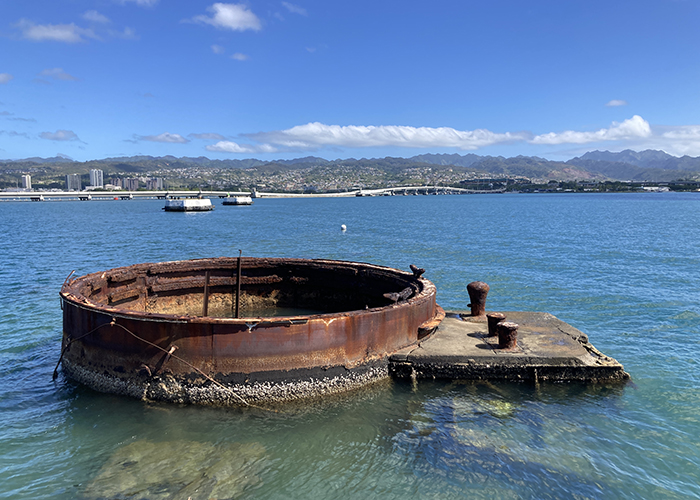 Previous Day |
Honolulu, HI → Hale‘iwa, HI → Honolulu, HI 82.4 mi (132.6 km) |
 Next Day |
Aloha kakahiaka, e nā kānaka a pau!
Today, I’m embarking on a big wartime loop, visiting the place that marks the beginning and the end of the United States’ involvement in World War II! Famous for a single day that still lives in infamy, Pearl Harbor National Memorial is now a complex of museums, monuments, and of course, memorials to those who died in the bombing of December 7, 1941.
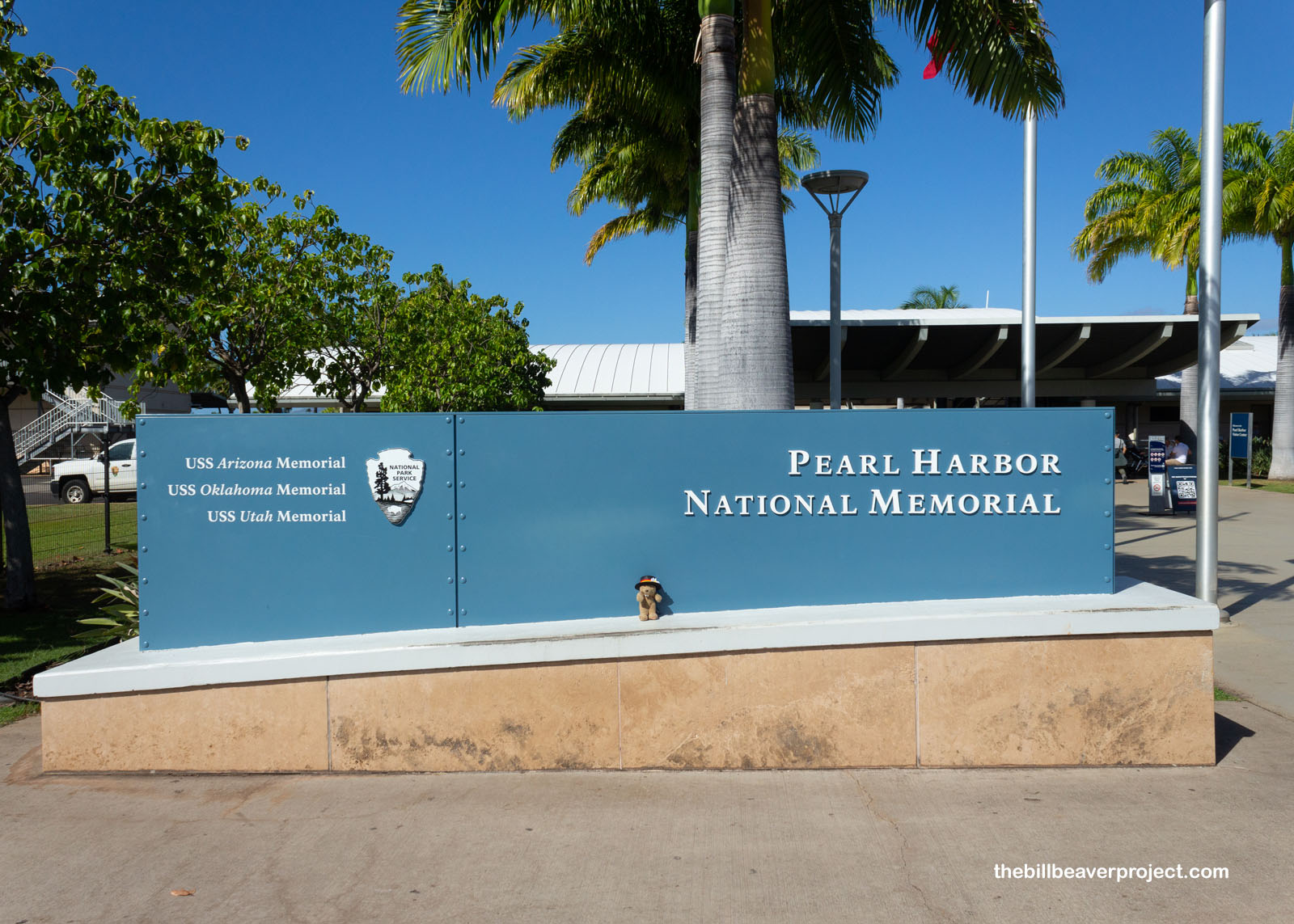 |
Originally called Wai Momi, or “Pearl Water,” this harbor’s earliest allure was as a sugar trading hub! The reef sealing it in had made it impossible for naval ships to enter, but with the onset of the Spanish-American War, the US Navy was willing to make some changes. After the fall of the monarchy, the US passed the Newlands Resolution on July 7, 1898, annexing annexed the territory of Hawai‘i! From there, the Navy got busy dredging the reef to make Pearl Harbor a convenient waypoint for ships crossing the Pacific! By 1908, the US had established its now infamous base, but the first ship, the USS California didn’t arrive until 1911!
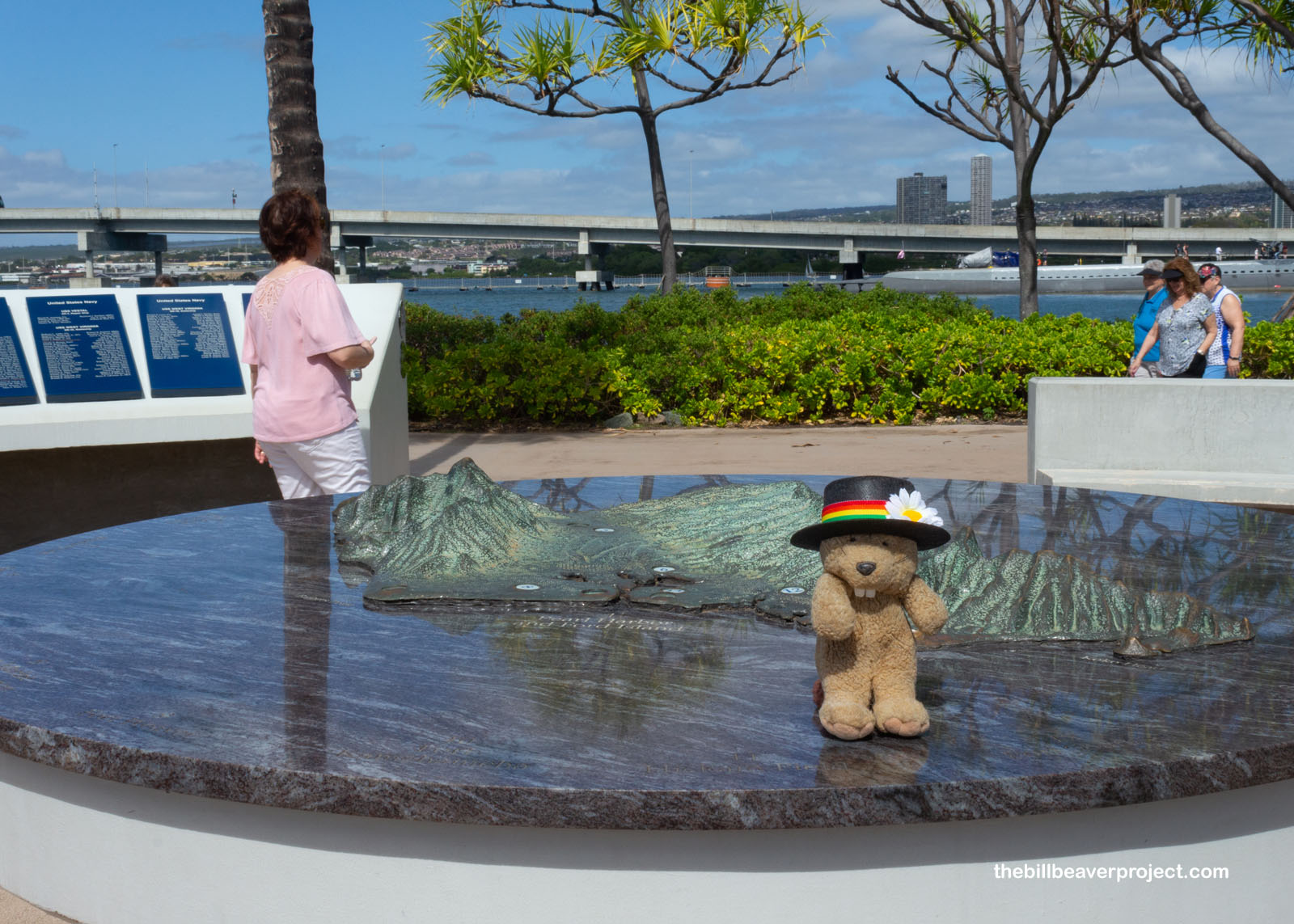 |
Fast-forward thirty years, and the US moved more and more ships to Pearl Harbor to counter the Empire of Japan, which had already taken over Korea in 1910 and invaded China in 1937! Ironically, all this fortification drew Japan’s attention, and around 8:00 AM on December 7, 1941, two waves of Japanese planes, 183 and 167 in count, came in over the north of O‘ahu! They struck bases along their route before concentrating their fire on the ships at Battleship Row! Eight ships were struck, and some, like the USS Arizona, went down!
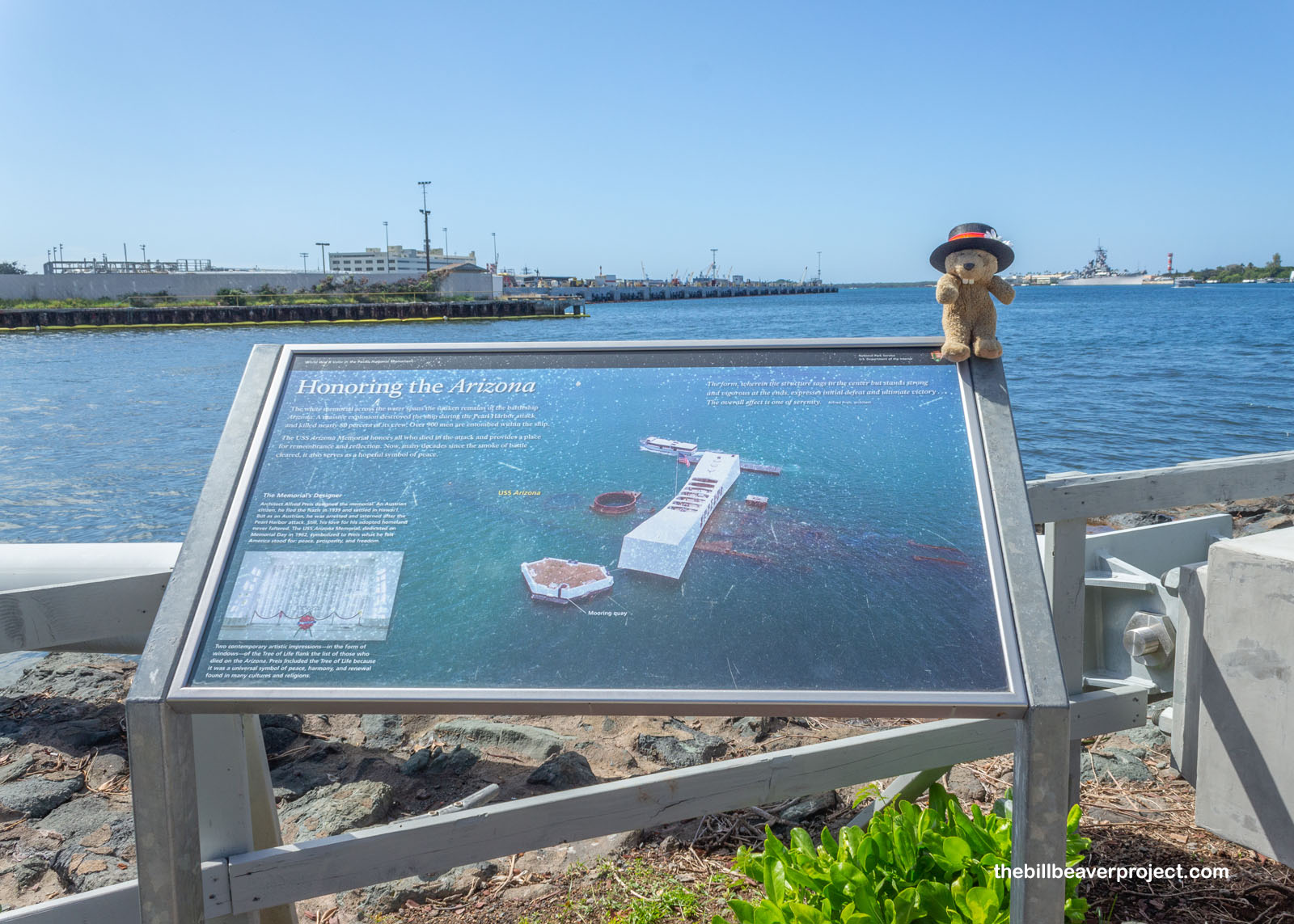 |
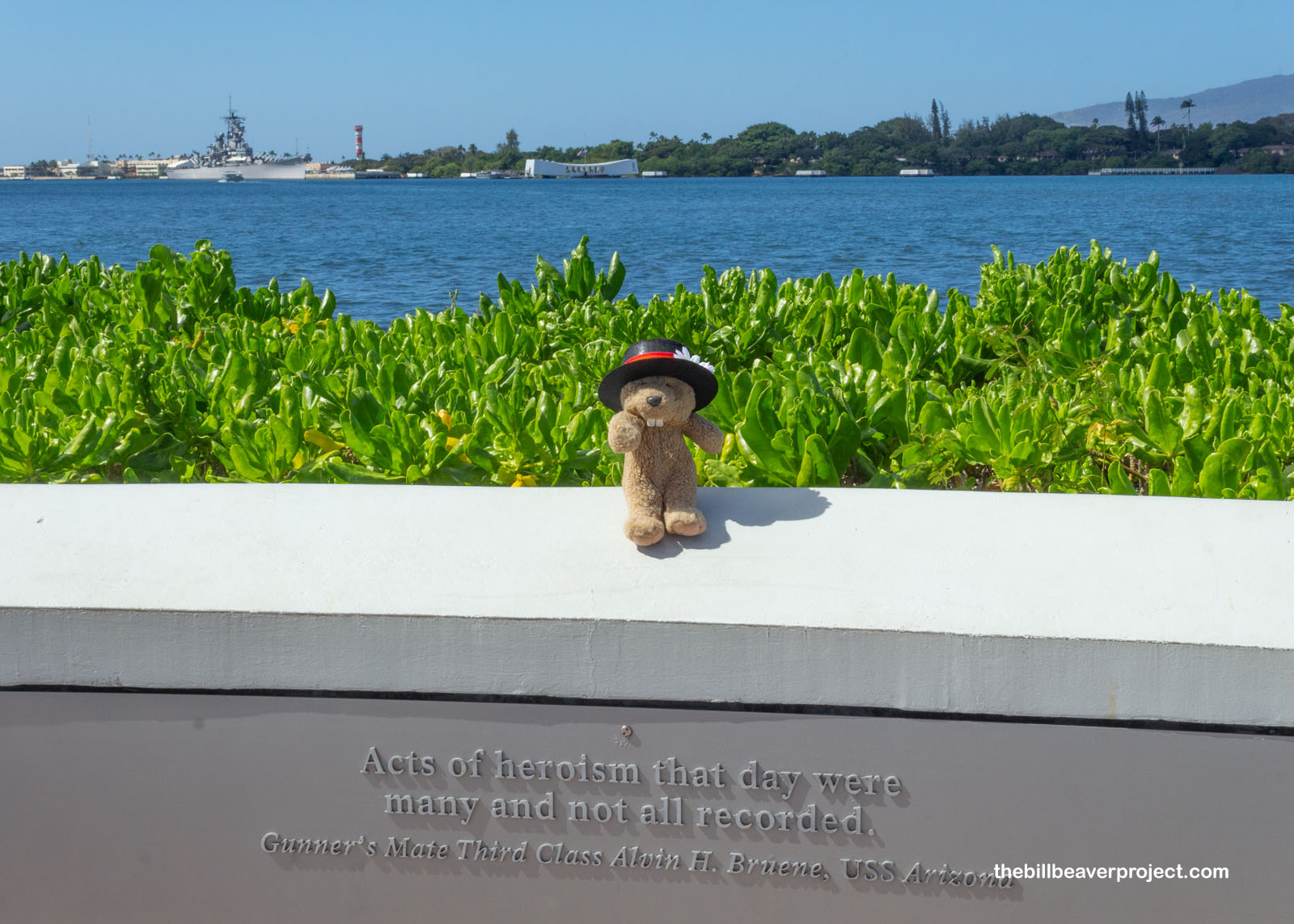 |
To commemorate the 1,102 souls still trapped in the wreckage below, the Navy brought on Alfred Preis, who had been in an internment camp here in Honolulu because he was born in Austria. He designed a monument that sags in the middle but is strong on both ends, which opened Memorial Day 1962.
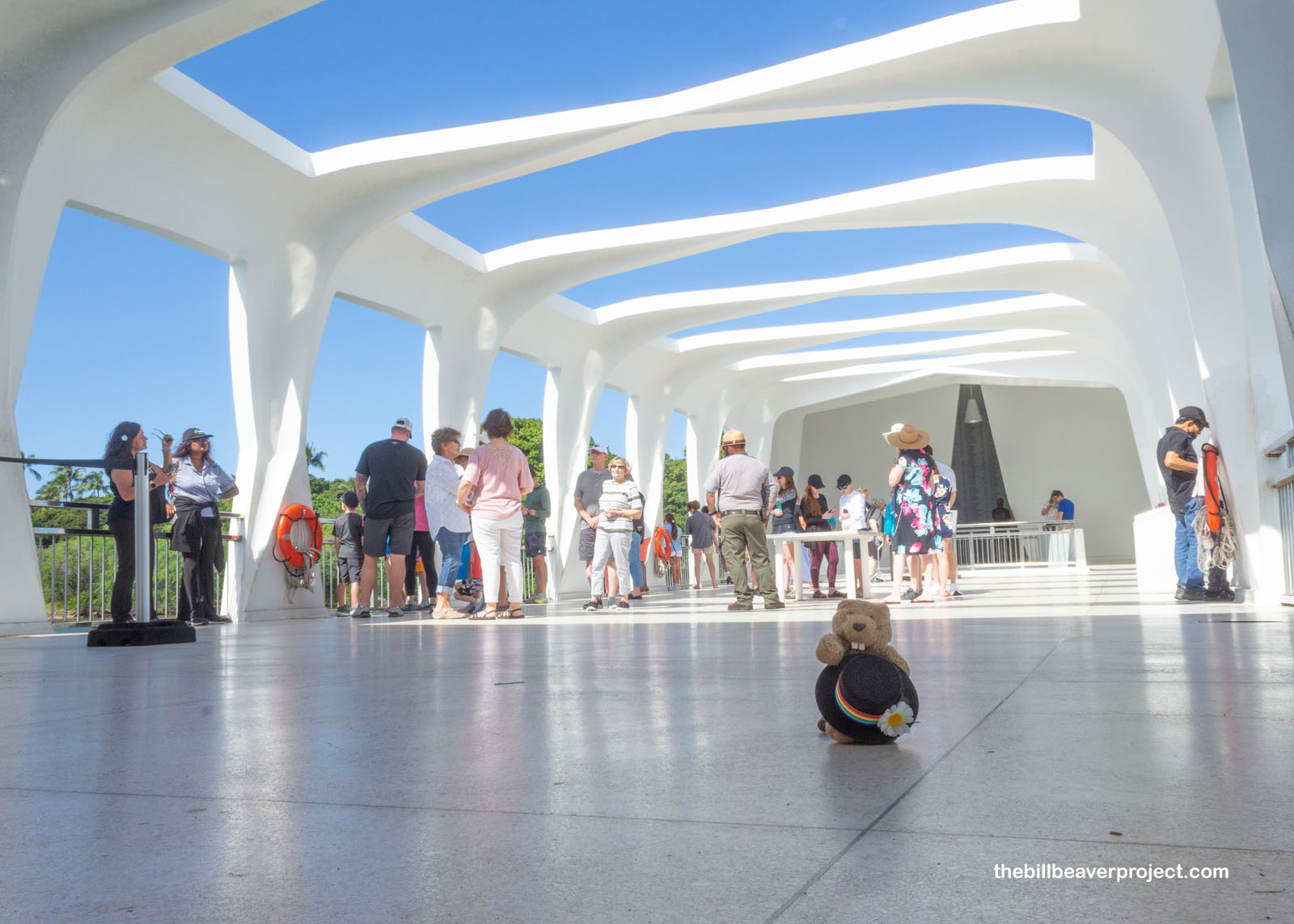 |
Visiting this memorial was heavily structured and carefully monitored by the Navy: a 15-minute boat ride, 15 minutes to learn and contemplate, then a 15-minute return, no skipping rides! Because it was so rushed, it took a while for the heaviness of the place to really sink in! After all these years, the ship and most of its crew were still below us!
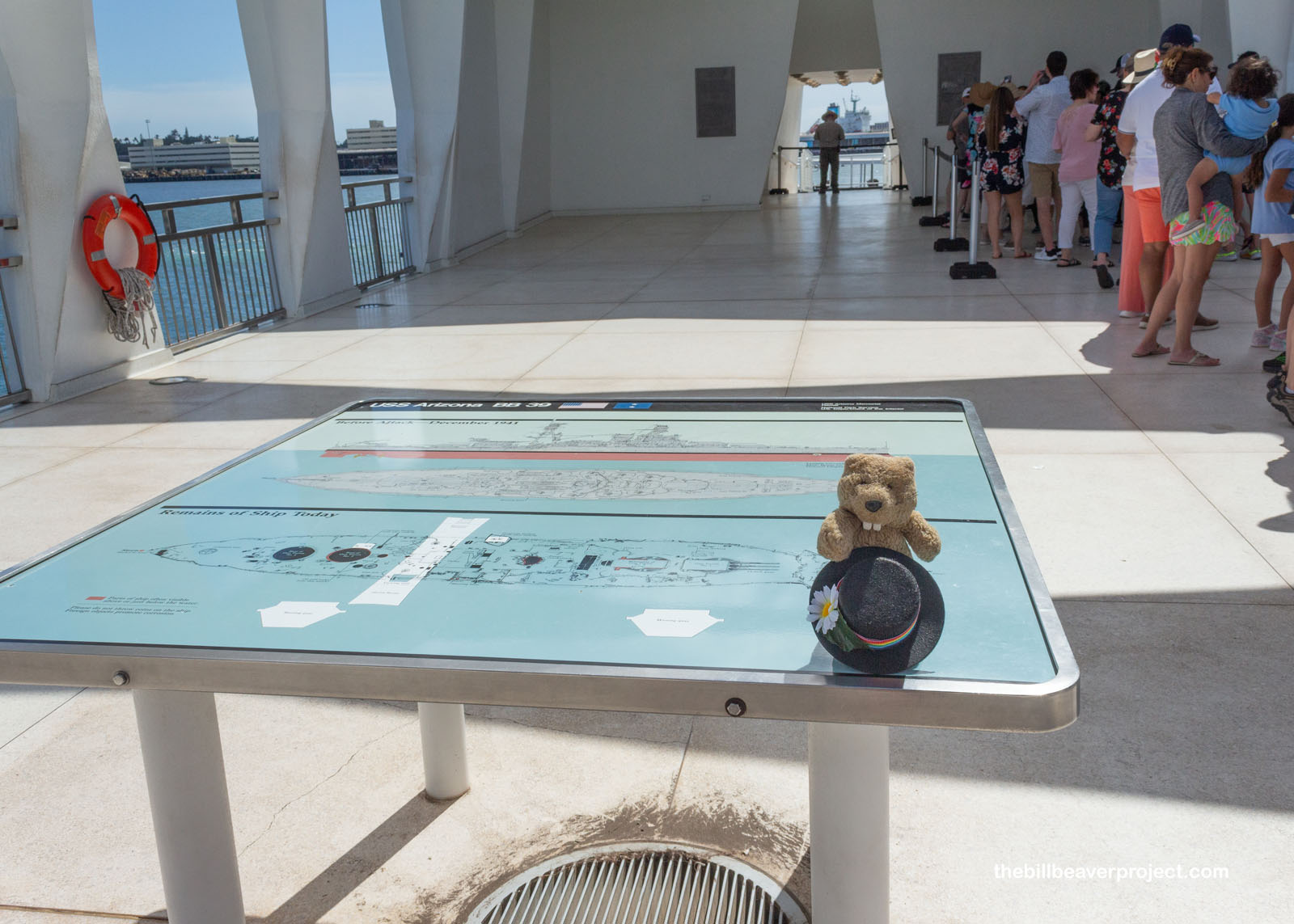 |
Before she was sent to Pearl Harbor, the Arizona had carried President Woodrow Wilson to the Paris Peace Conference at the end of World War I! She’d participated in the Greco-Turkish War of 1919 then headed to the Pacific in 1921. That morning of December 7, the Arizona was struck by armor-piercing bombs, which detonated an explosive magazine on board, killing 1,177 of the officers and crew on board! While most of the ships were repaired and even put back into use for the rest of the war, the Arizona, the Oklahoma, and the Utah could not be salvaged. They, and their crews, make up the core of Pearl Harbor National Memorial.
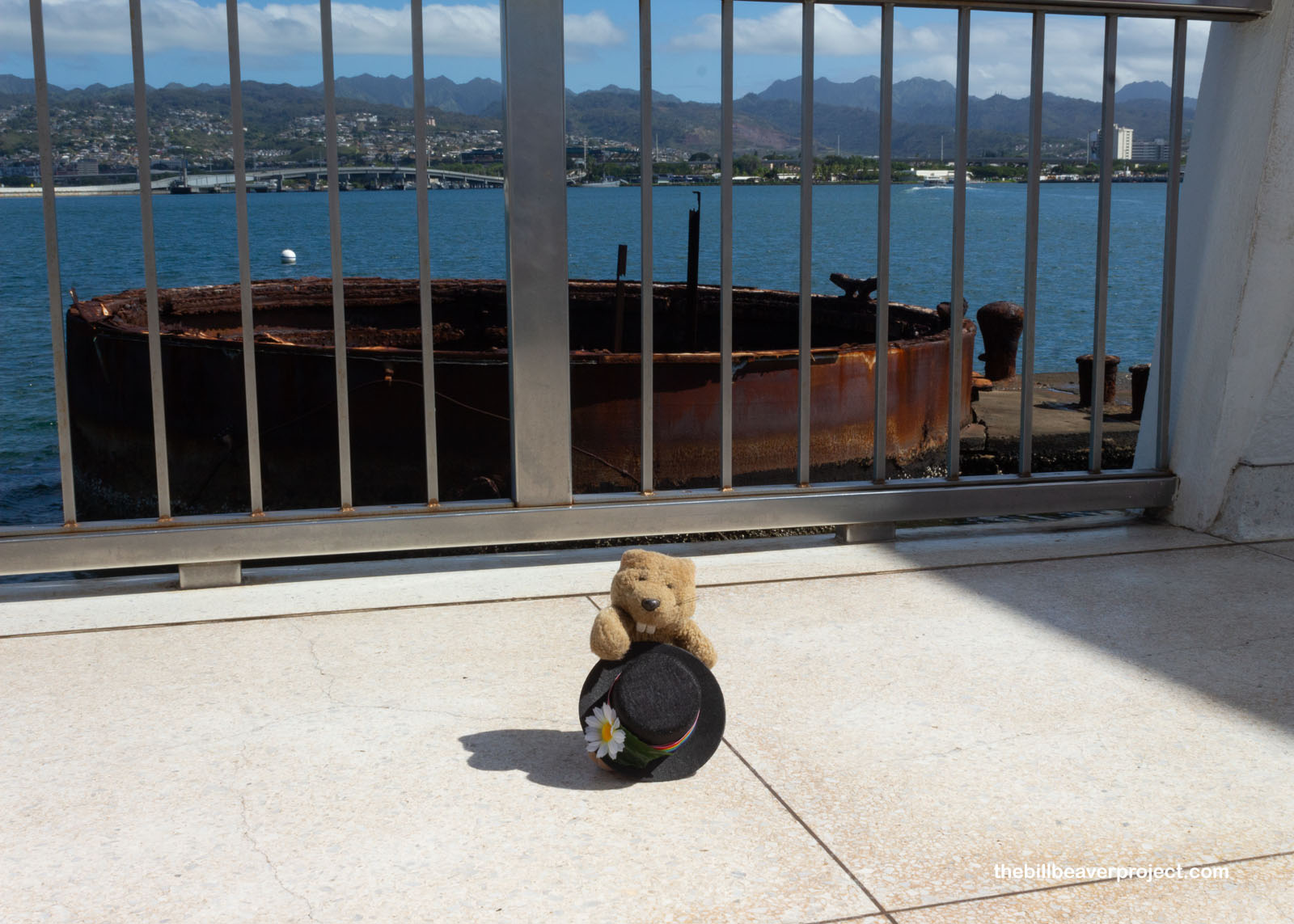 |
After the rush back to shore, I hopped on a shuttle bus onto the still-active naval base for a much more encouraging piece of history: the Battleship Missouri! While the Arizona may have represented the entrance of the US into the War, this battleship, commissioned on June 11, 1944, saw its end! Welcoming me aboard was a statue of Admiral Chester W. Nimitz, submarine expert, and the very first fleet admiral! He planned the assaults on Okinawa and Iwo Jima, then accepted the Japanese surrender aboard the Missouri, but I’ll get to that in a minute!
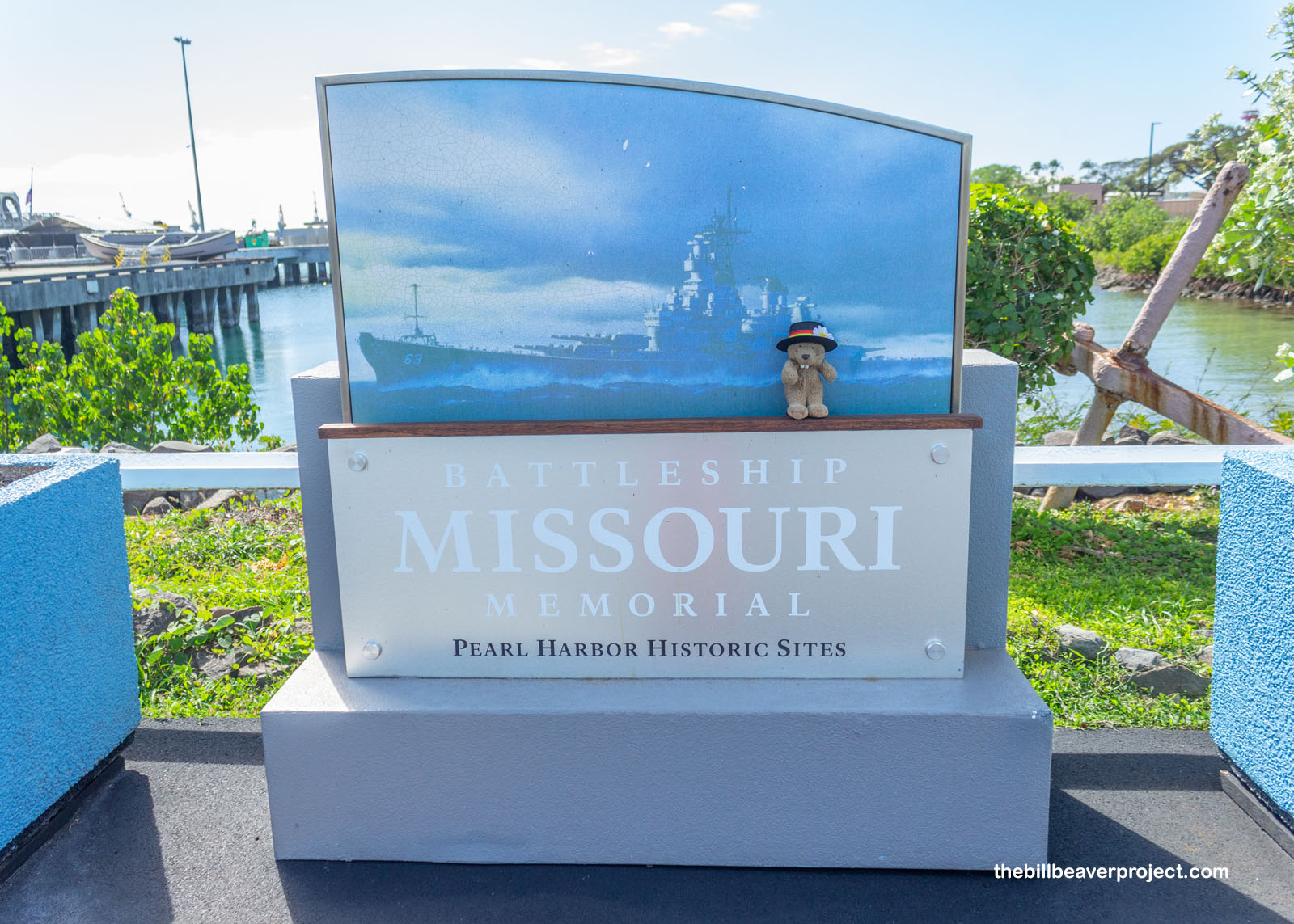 |
 |
Designated BB-63 (the Arizona was BB-39), the Missouri was only stationed at Pearl Harbor for about two months, a good while after the attacks. By February of 1945, she was already charging across the Pacific to attack Japan directly, first at Iwo Jima, then Kyushu, then Okinawa, Hokkaido, and Honshu! She was no pushover with anti-air gatling guns that could fire 50 rounds per second, and nine 16-inch caliber turret guns that could fire armor-piercing projectiles over 25 miles!
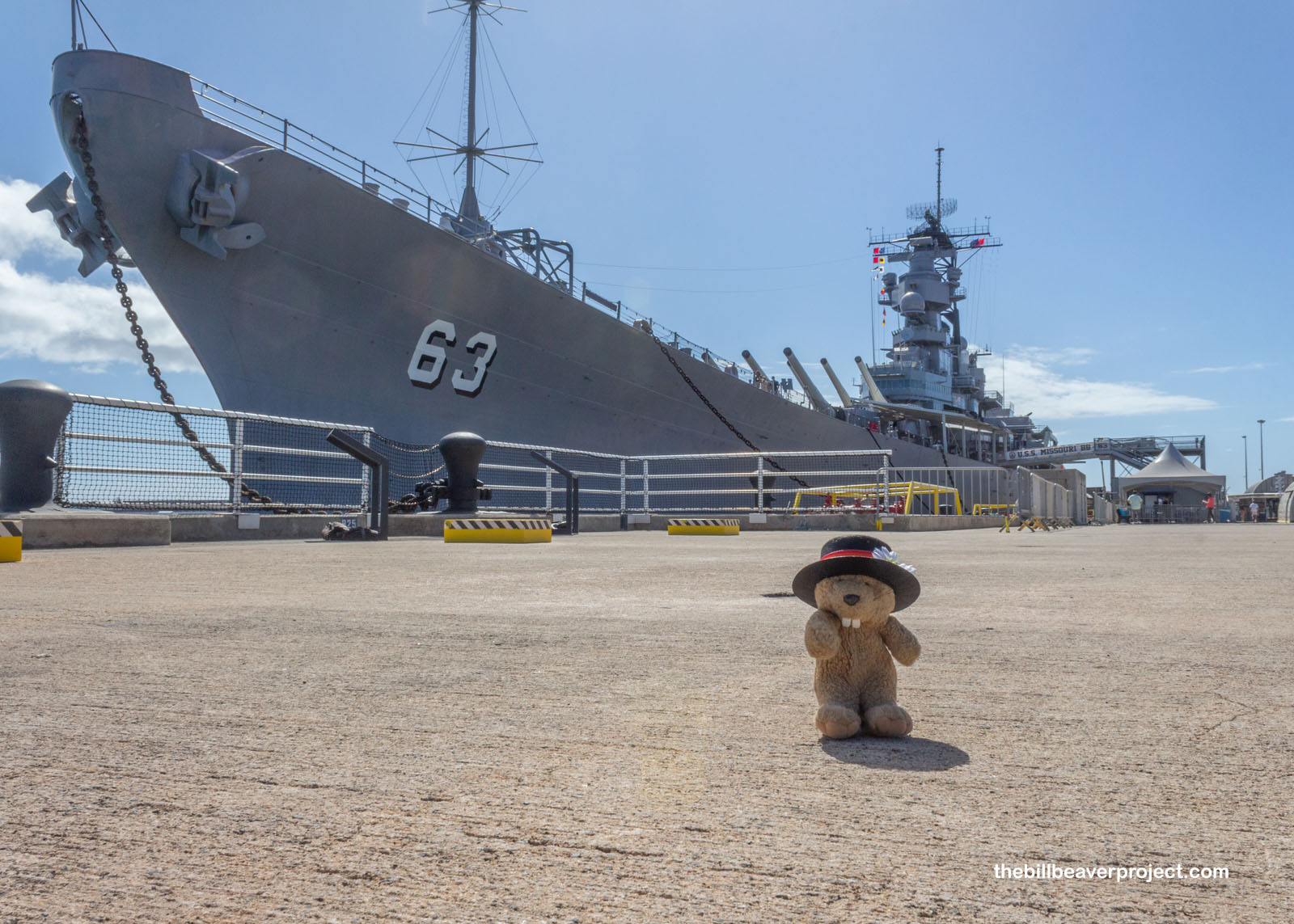 |
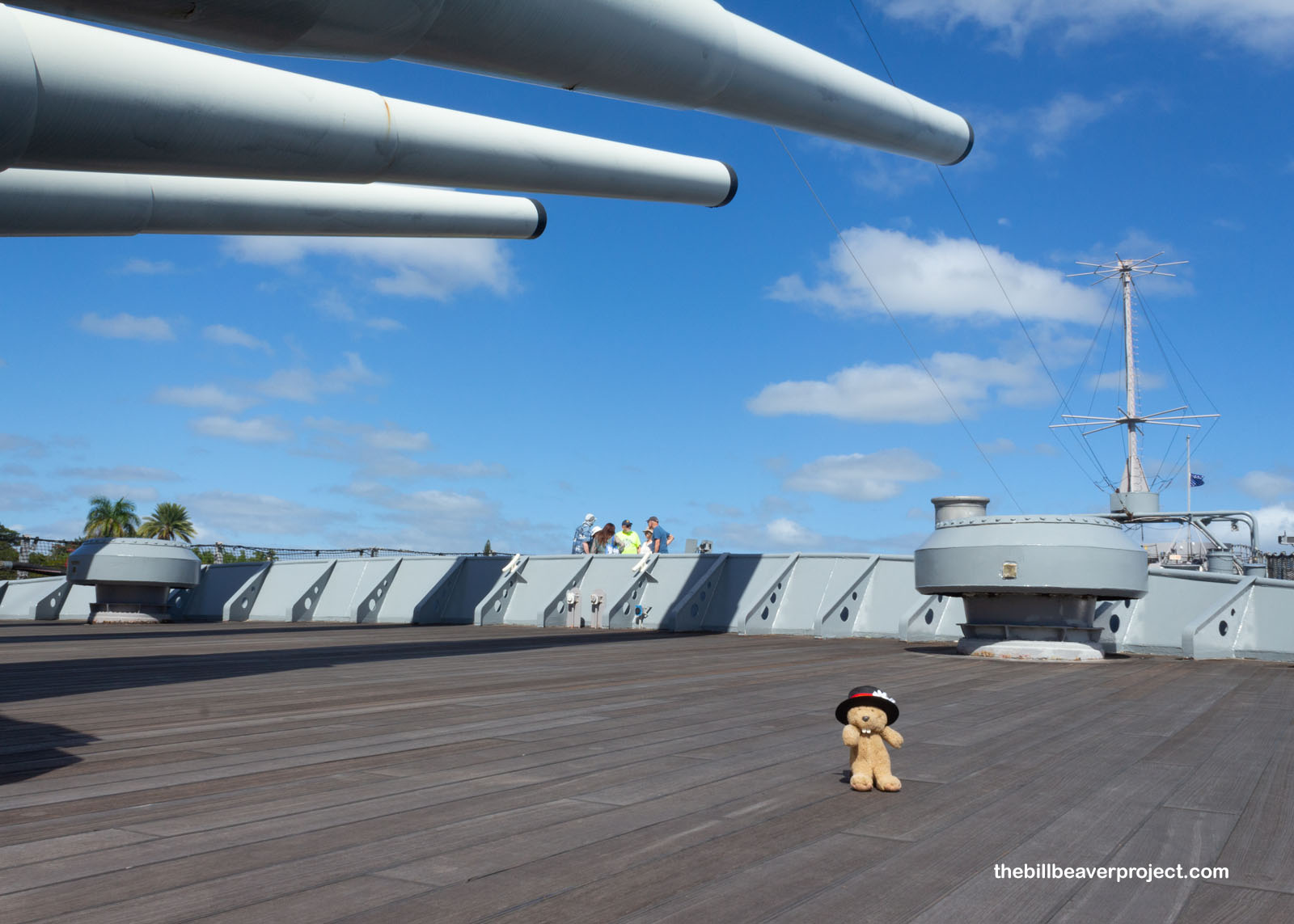 |
With that kind of firepower, the US Navy might have won the war without the atomic bomb, but it would have taken longer. With the bombing of Hiroshima and Nagasaki, the Empire of Japan had no choice but surrender! The plaque behind me marks the exact spot on the deck where the official surrender ceremony took place on September 2, 1945! Signing for Japan were the Emperor’s representative, Foreign Minister Mamoru Shigemitsu, and General Yoshijirō Umezu, representing the Japanese Army! General Douglas Macarthur and Admiral Nimitz signed, along with representatives from eight other countries! The costliest war in history, spanning the entire globe, was over!
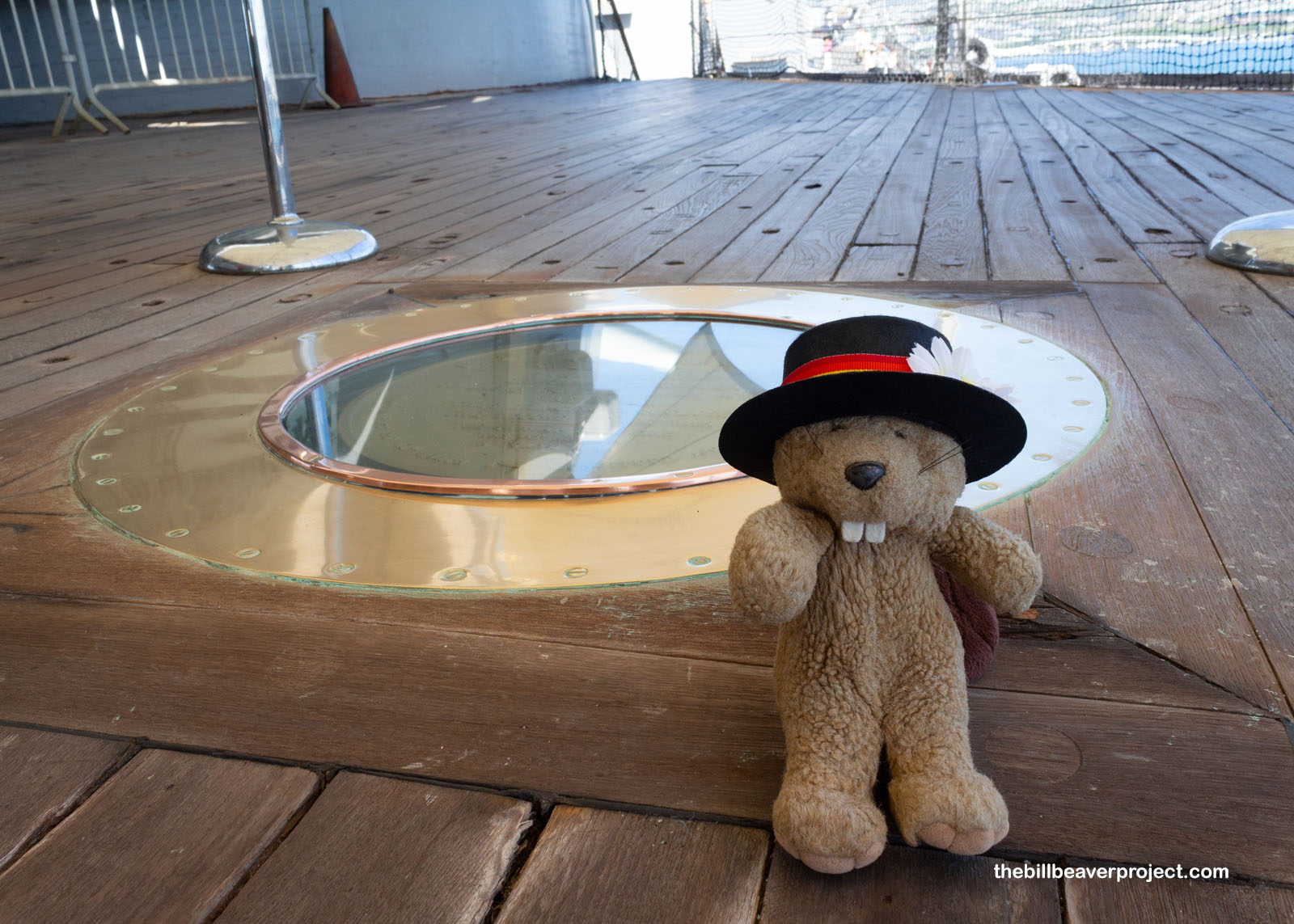 |
The tour route of the Missouri ran in a clockwise spiral, taking me from the Surrender Deck up several steep flights of stairs to the open bridge for views of the Arizona Memorial, the main guns, and the expanse of Pearl Harbor as a whole!
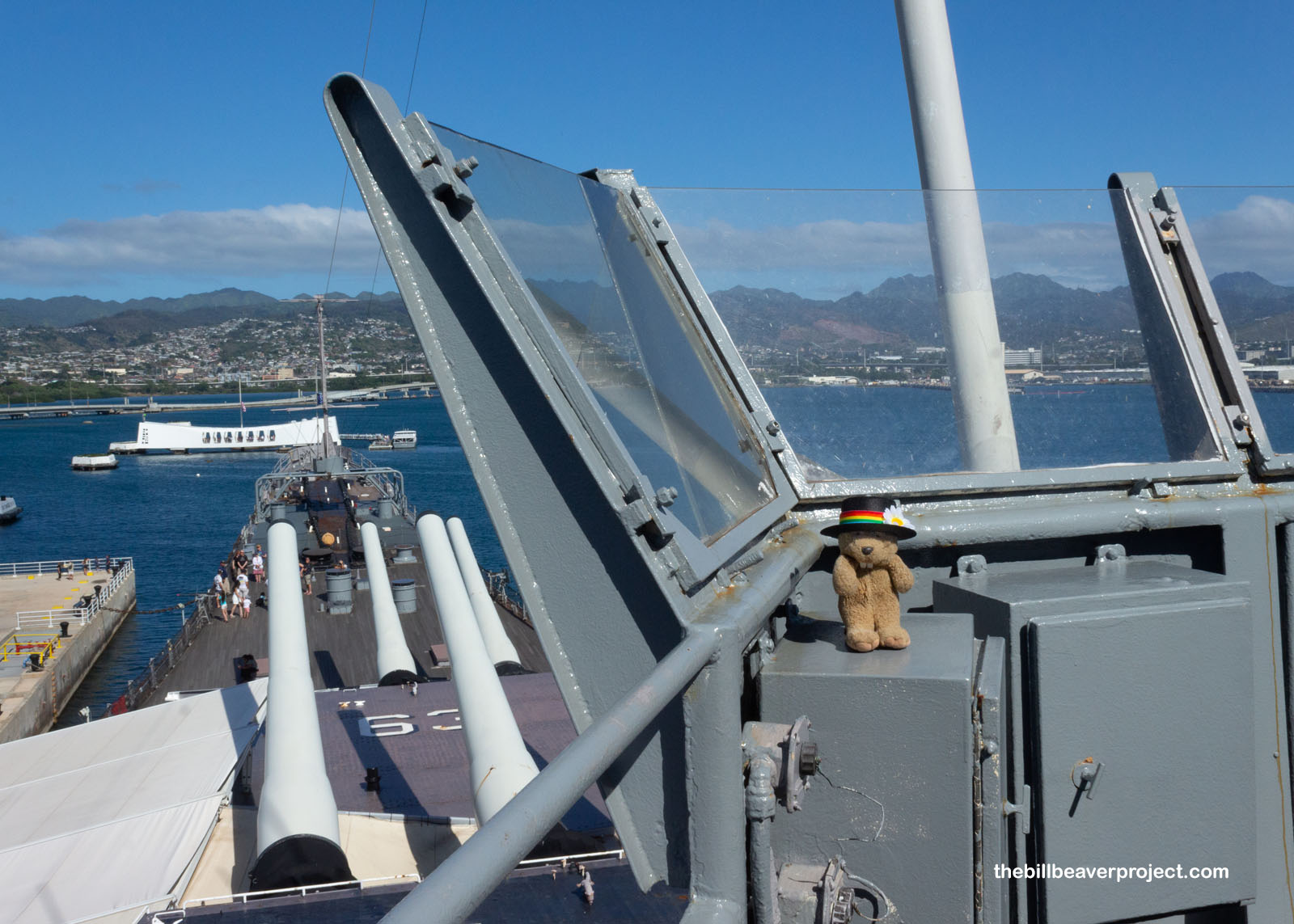 |
Climbing back down, I passed the spot where the Missouri was struck by a kamikaze plane during the invasion of Okinawa! The ship wasn’t badly damaged, but the crew did find the pilot’s body afterward. Though they were on opposite sides of the war, the ship’s crew gave the pilot a military burial at sea, which I thought was really swell! As for the Harlem Globetrotters basketball hoop right next to it, well, this ship didn’t fall out of use after World War II!
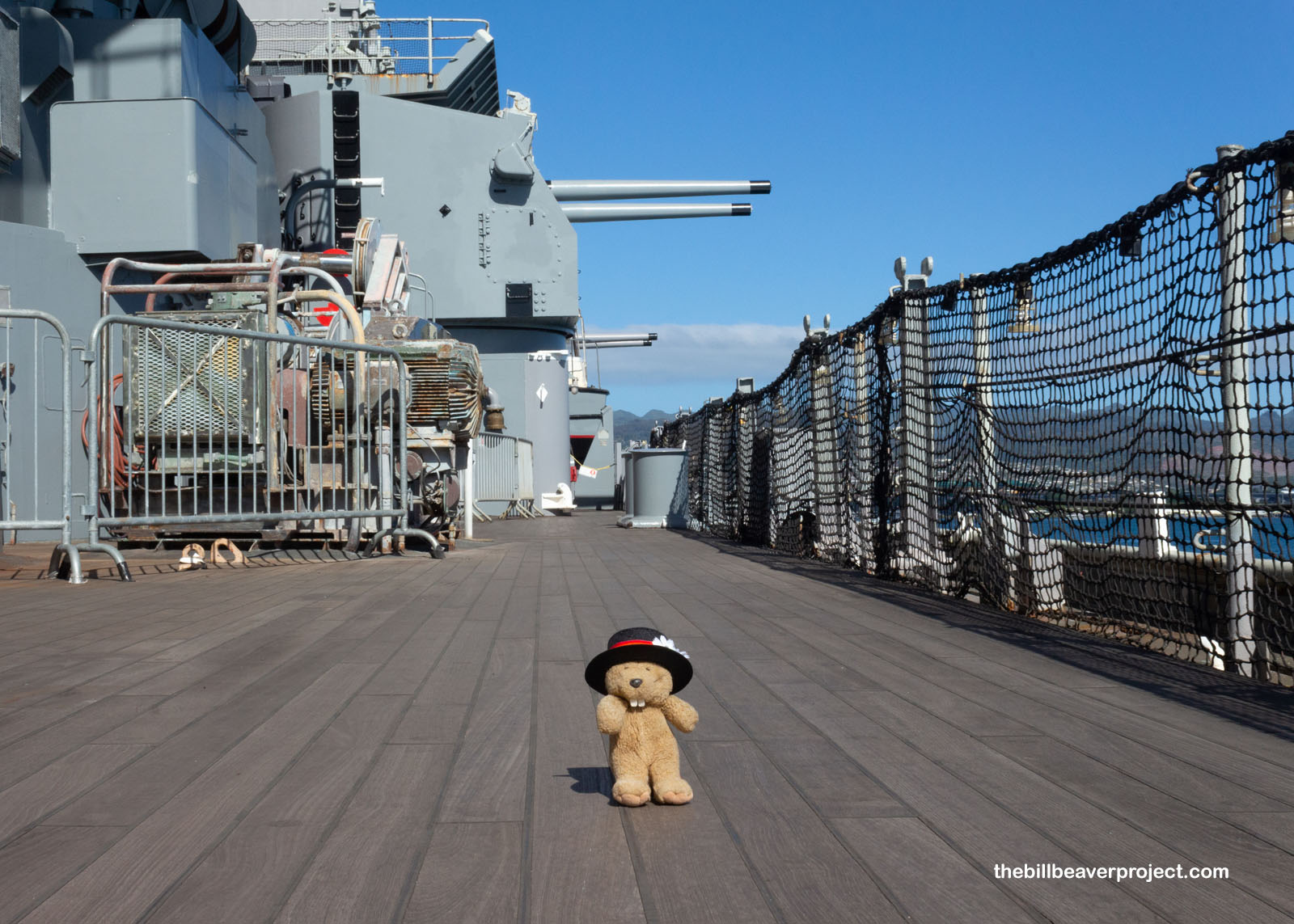 |
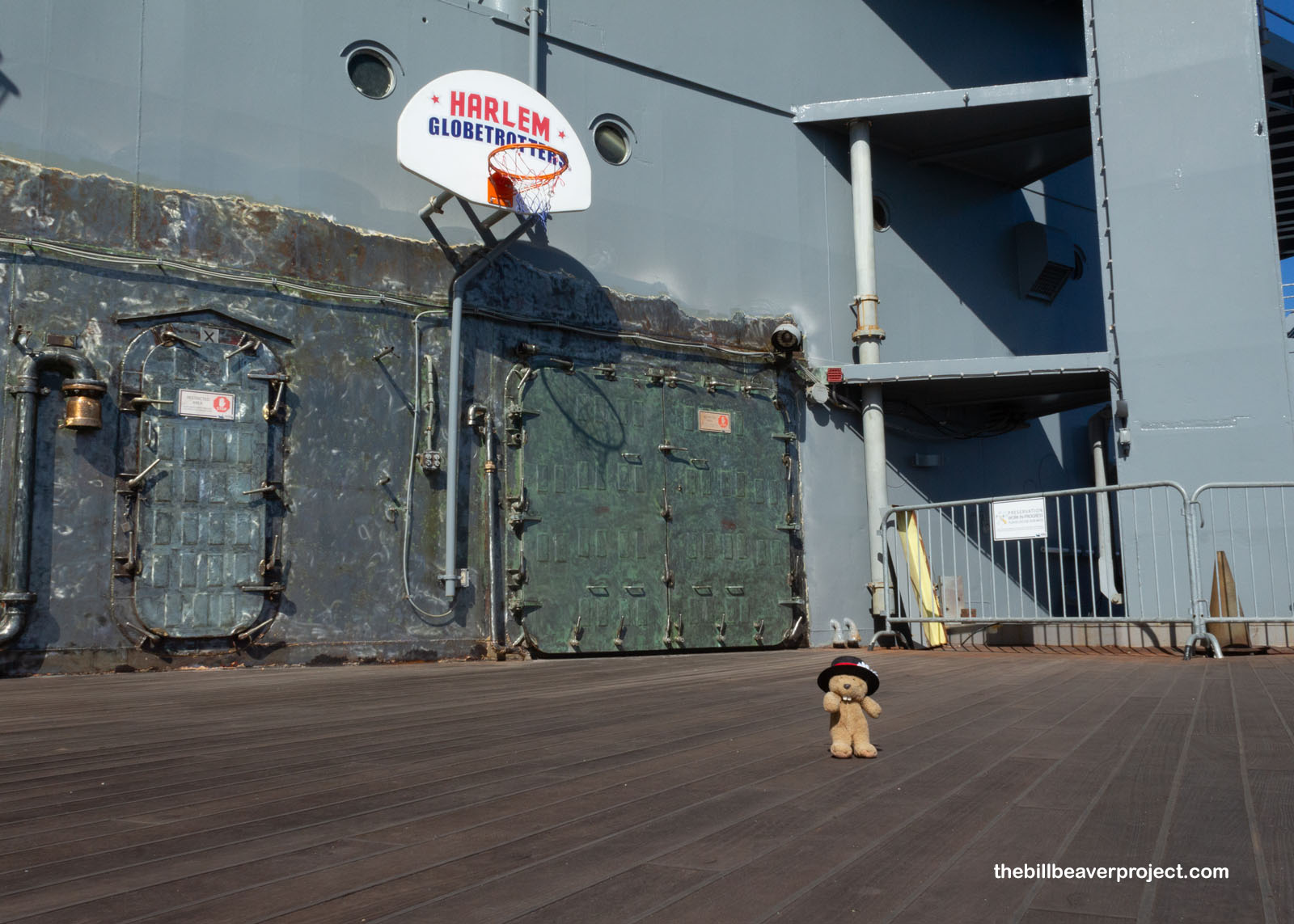 |
After World War II, the Missouri cruised the world for training exercises in Europe and the Caribbean then bombed my hometown of Incheon during the Korean War! That made me a little queasy, but my family was nowhere near Incheon in 1950. Decommissioned five years later, the ship was re-commissioned on May 10, 1986 for an around-the-world cruise, then some missile bombardments from the Persian Gulf during the Gulf War! Decommissioned for the last time on March 31, 1992, the Missouri returned to Pearl Harbor in 1998 and opened as a museum the following year!
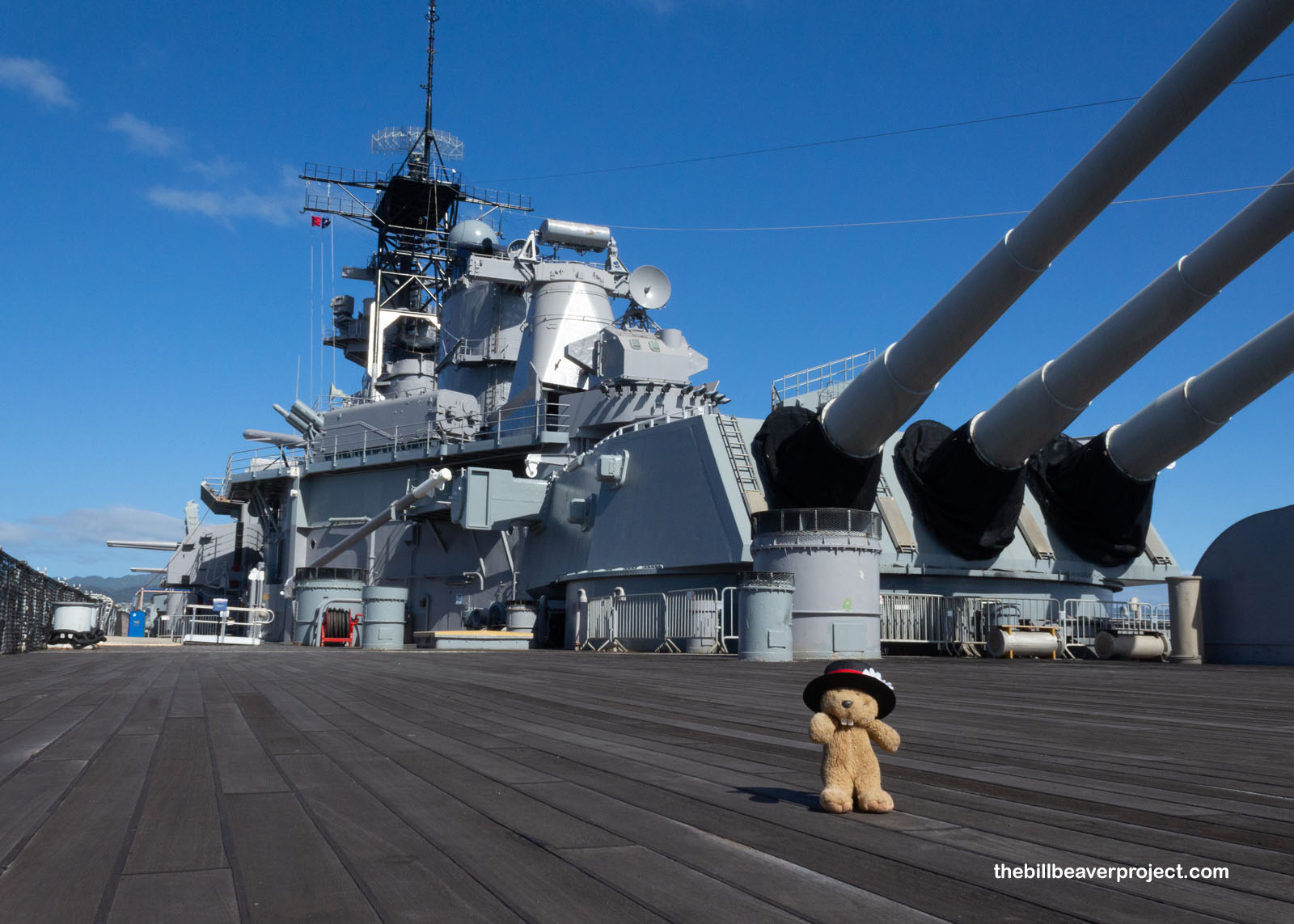 |
Below deck was a labyrinth of messes! By messes, I mean the places where the crew ate, and there were lots of them! During World War II, this ship was filled with 134 officers and 2,400 crew members, packed into tiny bunks connected by tiny halls with steep stairs. Folks had to be fit to fit here, body and mind! I was struggling just keeping up with the winding path through mess halls and bunks and officer quarters, past the displays about kamikaze (Tokkotai) pilots and movies that featured the Missouri, until finally, I emerged again above deck and was ready to go find myself a nice sunset vista where I could absorb all this heavy history.
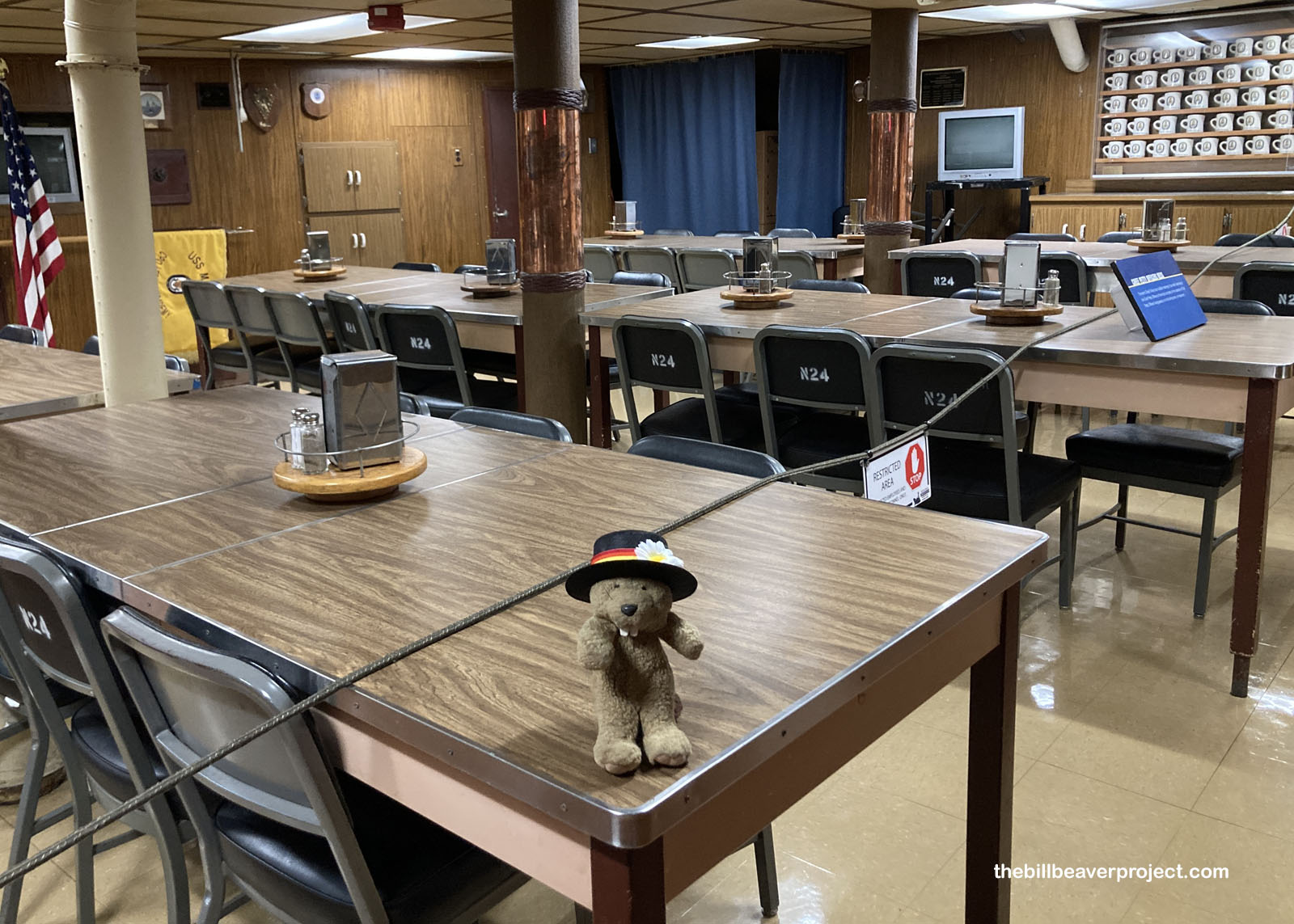 |
I headed for O‘ahu’s North Shore, hoping to see Pu‘u O Mahuka Heiau State Historic Site, a Nationally Registered ancient heiau, or temple, but the road was closed because of flooding! Instead, I decided to visit Waimea Canyon, one of Hawai‘i’s three Waimea Canyons, but it closed at 4:00! Argh! My goal of a tranquil evening was looking like a long shot, but I did find one open place after all this running around: Hale‘iwa Beach!
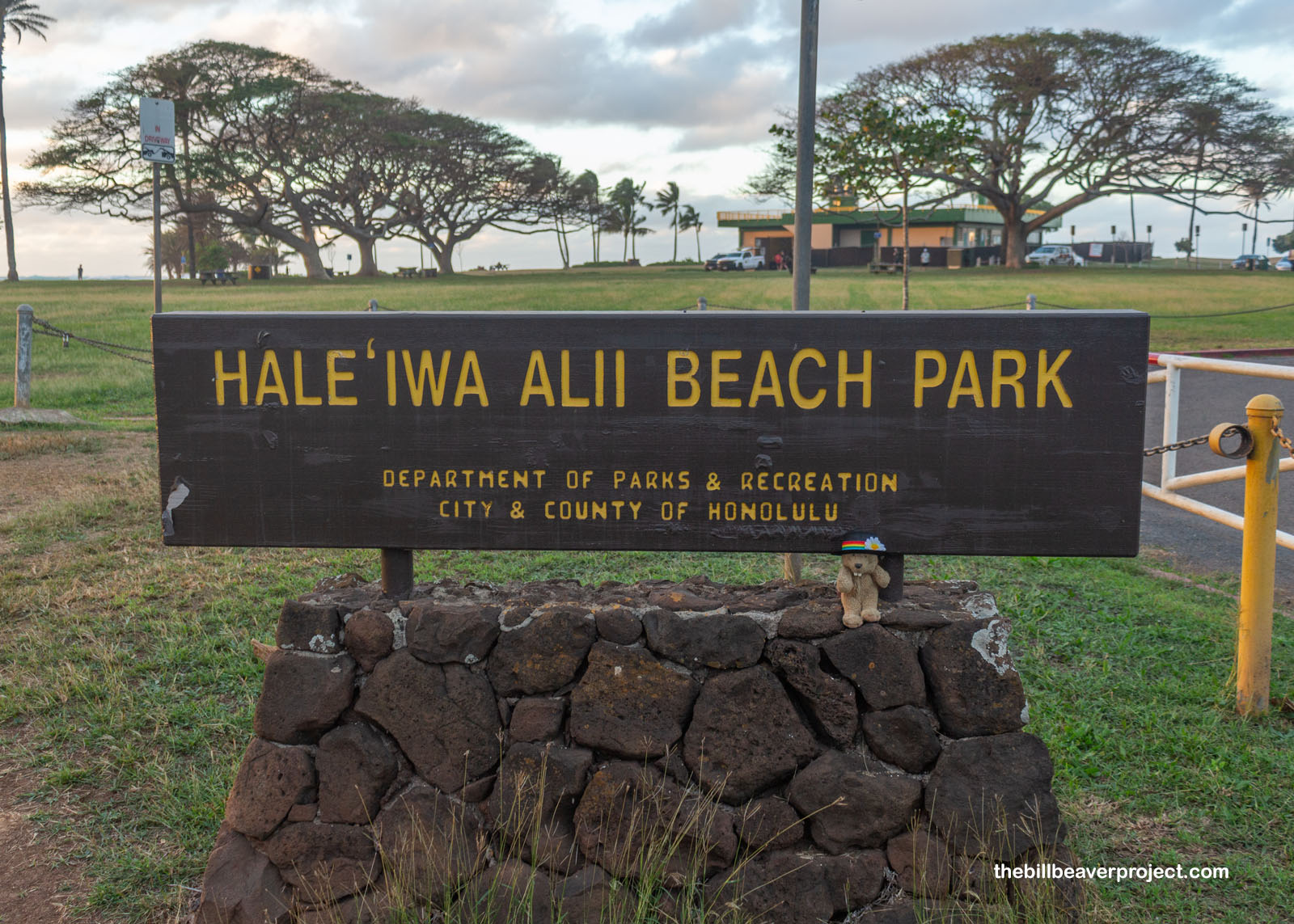 |
Meaning “House of the Frigate Bird,” this beach town takes its name from a historic hotel called Hale‘iwa, built in 1898 by Benjamin Dillingham, who also built a two-hour railway line from Honolulu to Waialua, just south of here! The town’s a big draw for surfers and paddle boarders, especially in winter when huge waves come in! But I was here to watch a sunset!
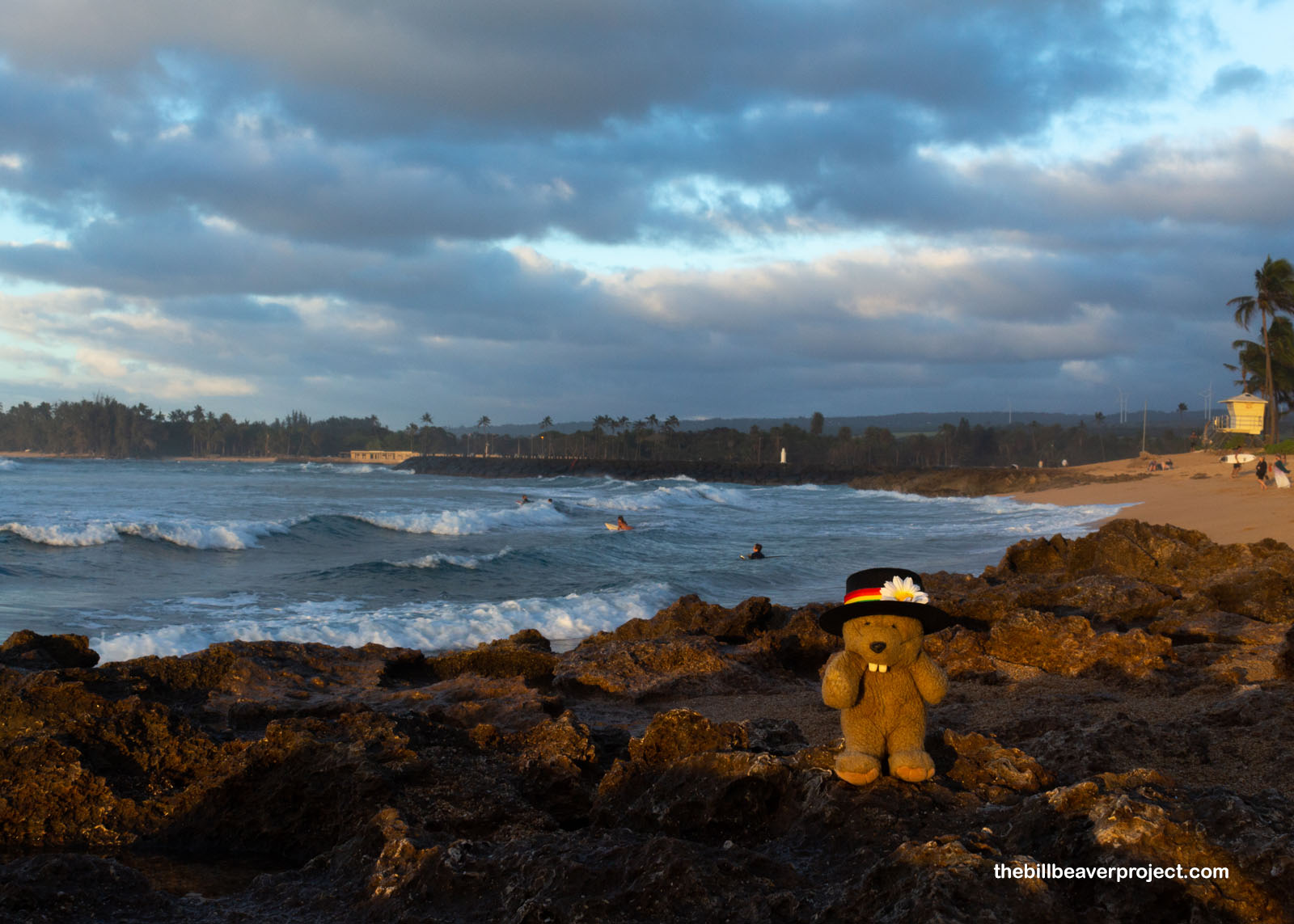 |
Well, folks, as you can see in the video below, I thought I found the perfect spot to watch the sun set, where the tidepools were going to reflect all that golden light. But you know, the ocean is a prankster, and she had other plans for me!
Shaking myself off, and very irked at getting my new hat wet already, I tromped further inland and picked myself up a trio of malasadas, dense, delicious, doughnut-like pastries brought here by Portuguese plantation workers in 1878! These would be just the ticket to get over my sudden soaking as I watched the sun set over Pohaku Lana‘i, a huge, stacked limestone formation, which legend says floated here all the way from Tahiti, and was part of a heiau dedicated to the creator god, Kāne! I, too, asked Kāne for invulnerability as the sun set, not from battle, but from stomachache after eating too many malasadas!
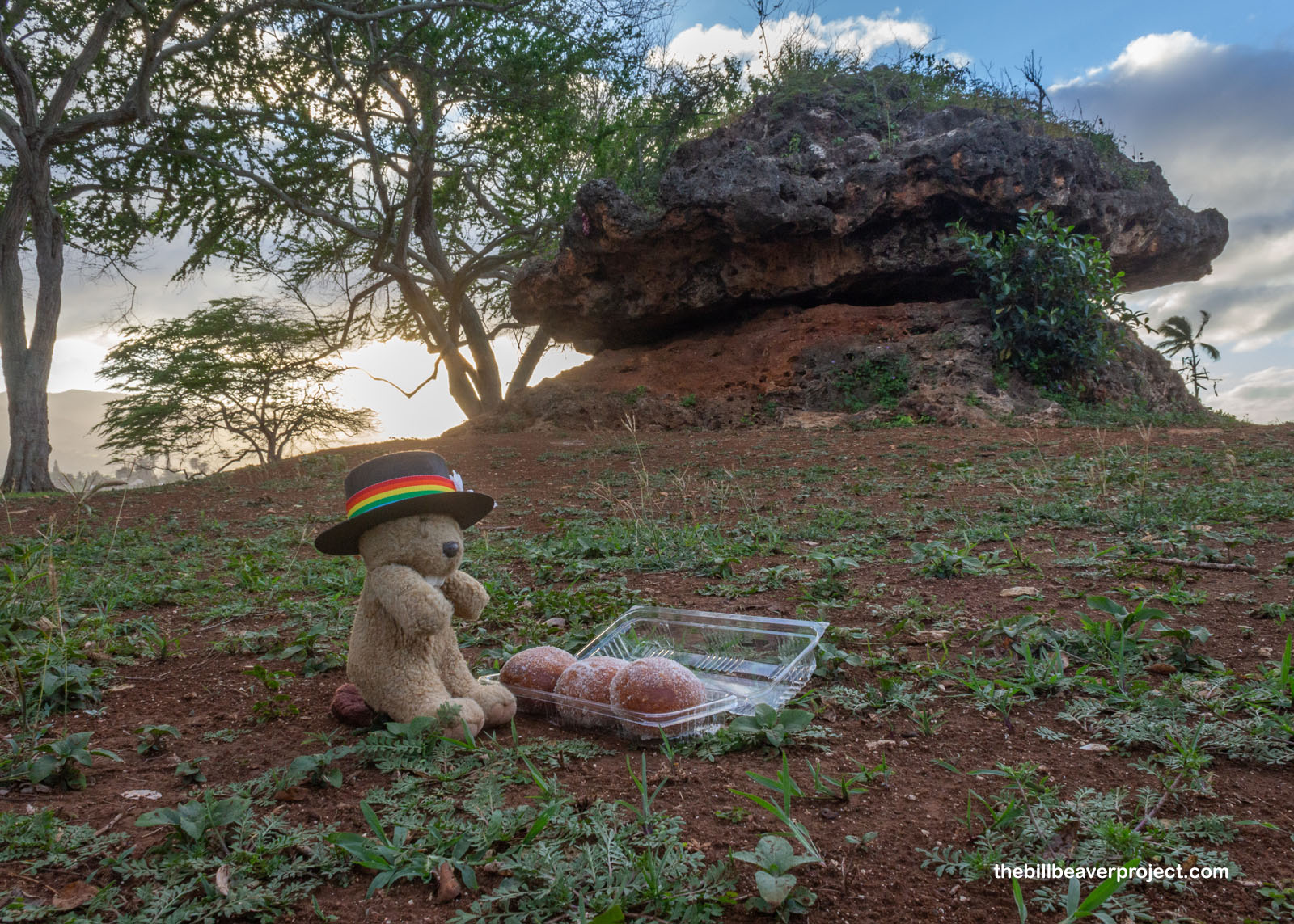 |
Having explored Pearl Harbor, I’ve completed my main quest here on the island of O‘ahu, but that doesn’t mean I’ve run out of cool things to see! Tomorrow, I’ll visit some more neat historical sites and aim to hike the famous volcano, Diamond Head! Tune in then for some more island adventures!
E ʻike au iā ʻoe i ka lā ʻapōpō!

 Previous Day |
Total Ground Covered: 91.8 mi (147.7 km) |
 Next Day |
